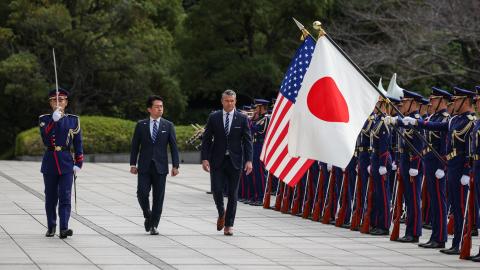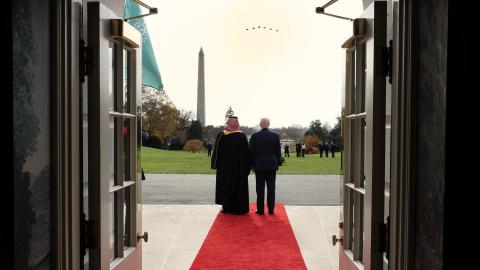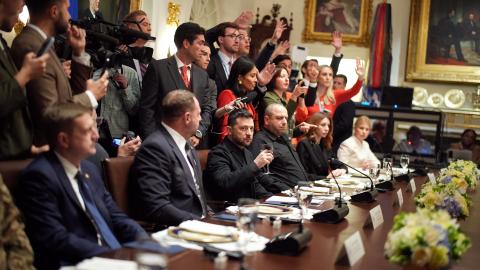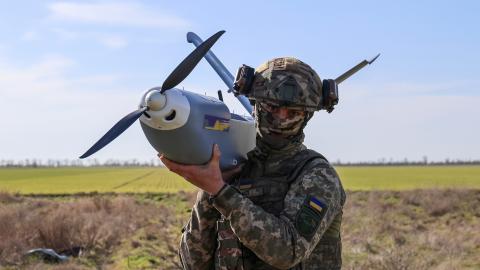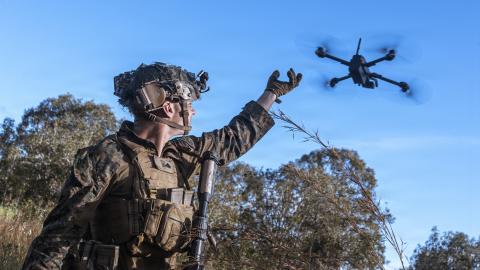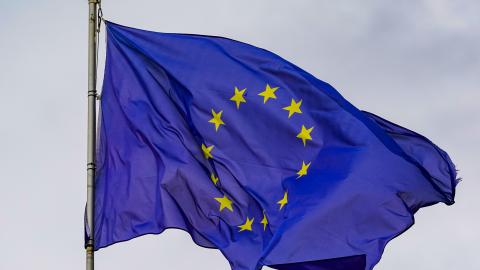European Commission President Ursula von der Leyen on Wednesday gave a forceful speech in the European Parliament about the security threats and geopolitical challenges Europe faces from Russia. Her comments were striking for their clarity, given how cautious EU officials had previously been in describing Russia’s behavior. Von der Leyen did not mince her words, stating that Moscow’s actions amounted to “a coherent and escalating campaign to unsettle our citizens, test our resolve, divide our union and weaken our support for Ukraine. And it is time to call it by its name. This is hybrid warfare.”
For European countries, the question of what role the EU should play in defense has been debated since the early days of integration, even during the time of the European Coal and Steel Community in the 1950s.
After decades of enlargement, integration and successive treaties that often centralized power in Brussels at the expense of member states’ sovereignty, defense has remained the one area in which individual nations have been reluctant to cede authority. The reason is simple: the decision to go to war — or not — is still widely seen as a sovereign prerogative that belongs to the nation state, not a supranational body based in Brussels.
However, since Russia’s large-scale invasion of Ukraine in February 2022, the EU has largely abandoned its grand notions of a unified European army or full defense consolidation. Instead, it has pursued more helpful and practical steps to strengthen Europe’s security.
In many ways, Russia’s invasion of Ukraine served as a wake-up call that the idealistic and lofty goals of a single integrated defense policy were misplaced. Instead, the EU chose to pursue more effective measures. Among these was the European Commission’s decision to finance and fund weapons purchases for Ukraine, a country that is not even an EU member. A decade or two ago, such a move would have been unthinkable.
The war in Ukraine has also allowed Brussels to move beyond the anxieties caused by Brexit, recognizing that, regardless of whether the UK is part of the EU, the continent’s security fate remains deeply intertwined with that of London. This realization has led to more open-minded thinking in Brussels about military and defense cooperation with non-EU countries that are still European, like the UK and Turkiye.
The two most recent concrete measures to enhance Europe’s defense capabilities stand out. The first is the “ReArmEU” initiative, also known as Readiness 2030. Championed by Von der Leyen, it has the ambitious goal of securing €800 billion ($930 billion) in public and private investment for the defense sector across EU member states.
Beyond the financial component, the initiative introduces bureaucratic reforms designed to streamline defense procurement across the EU and give member states greater fiscal flexibility — allowing them to bypass certain budget deficit restrictions if it means increasing investment in their armed forces.
However, some countries, including Spain and Italy, considered the term “ReArmEU” too provocative, which is why the initiative is often referred to as Readiness 2030 instead.
The second major initiative is Security Action for Europe, or SAFE, which serves as a key component of Readiness 2030. It provides €150 billion in loans and special financing to strengthen Europe’s armaments industry. One of the main lessons from Russia’s invasion of Ukraine has been just how munitions-intensive modern warfare is and how depleted stockpiles across Europe and even in the US have become due to years of underinvestment.
For American policymakers, especially President Donald Trump, these EU initiatives are music to their ears. Trump has long focused his engagement with European counterparts on better burden-sharing within NATO. A majority of EU member states are also NATO members so, when EU leaders commit to greater defense spending, it is welcome news in the Oval Office.
However, many American policymakers have also been skeptical of EU defense initiatives, fearing that, over time, they could undermine NATO’s cohesion by attempting to supplant the alliance’s role in European defense. But the pragmatic nature of the EU’s recent actions — moving away from abstract ideas such as an EU army or new military committees in Brussels and toward concrete measures like funding for munitions and greater investment in defense capabilities — has also been welcomed in Washington.
For NATO, these EU efforts complement the commitments made at the alliance’s June summit, where, under mounting pressure from the Trump administration, members agreed to spend 5 percent of gross domestic product on defense by 2034. This represents a significant increase from the current 2 percent target.
But one of the most important points in Von der Leyen’s speech should not go unnoticed: her explicit reference to hybrid warfare. Bigger defense budgets can help European countries deter military aggression — and NATO will continue to lead that effort. But many of Russia’s actions in Europe, from disinformation campaigns to sabotage incidents and energy coercion, are hybrid threats that erode Europe’s cohesion without crossing the line into open warfare. These are challenges NATO is not structured to address, but the EU and its member states are.
With newfound momentum behind European defense initiatives, the next few years will be crucial. Will Europe meet its own spending targets and cut the bureaucratic red tape that slows procurement or will political interest fade once it becomes clear that reform is easier said than done? The stakes are high. It is time for Brussels to turn rhetoric into action.
